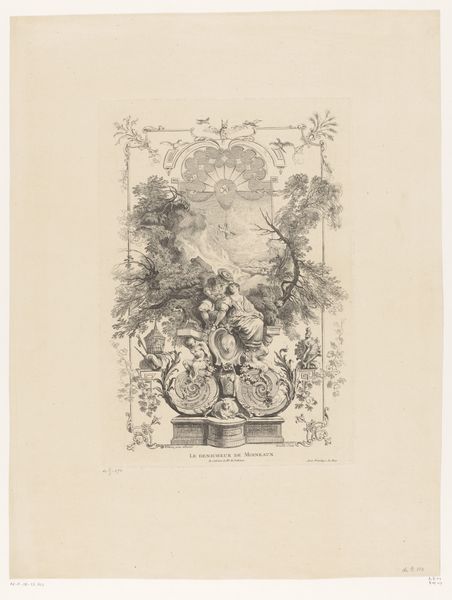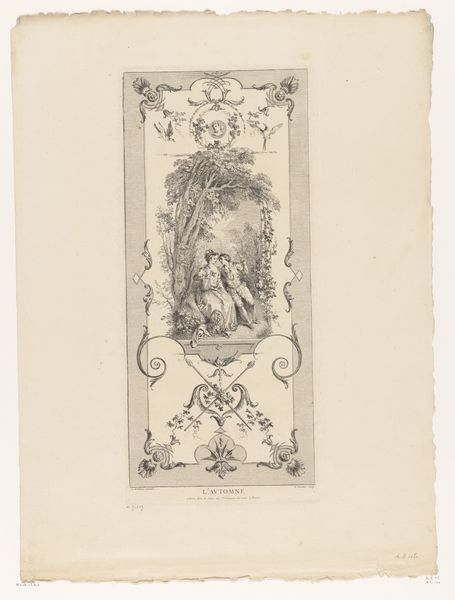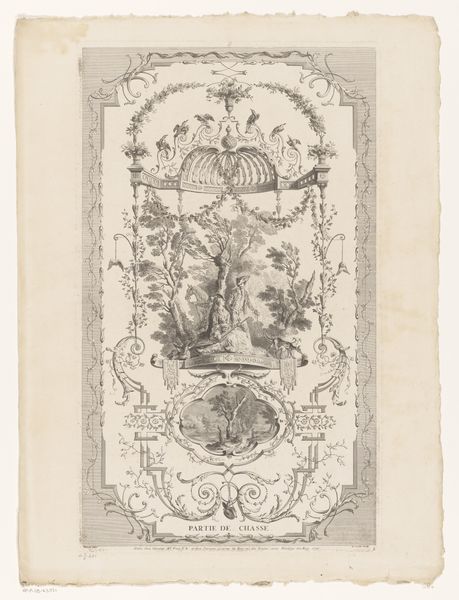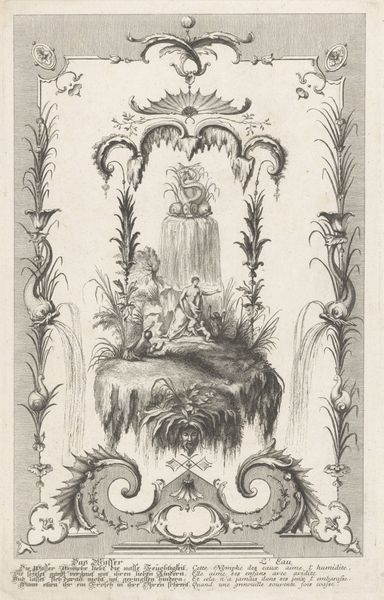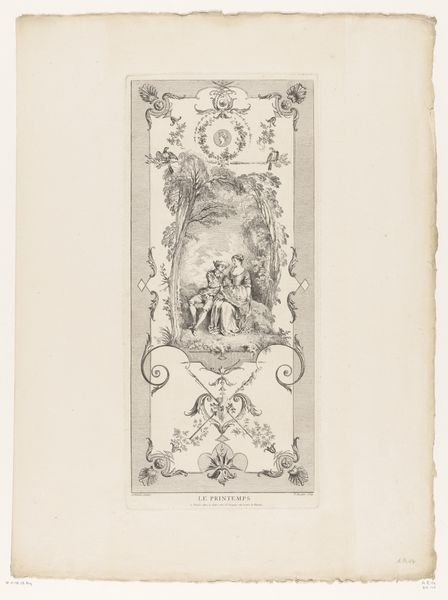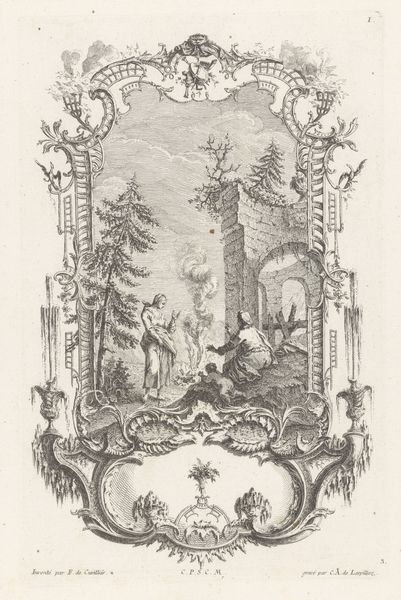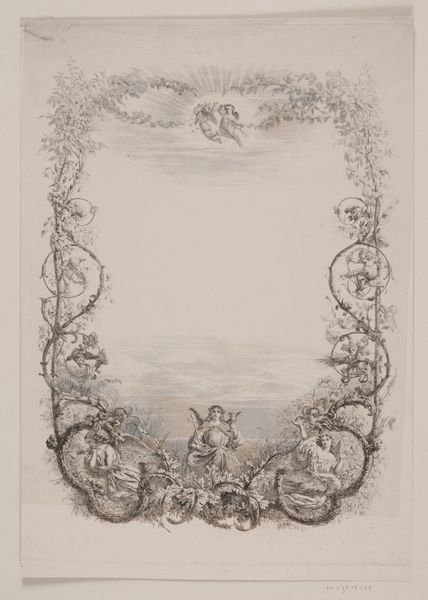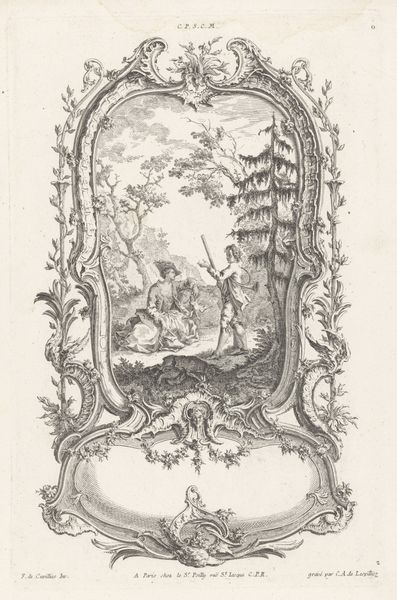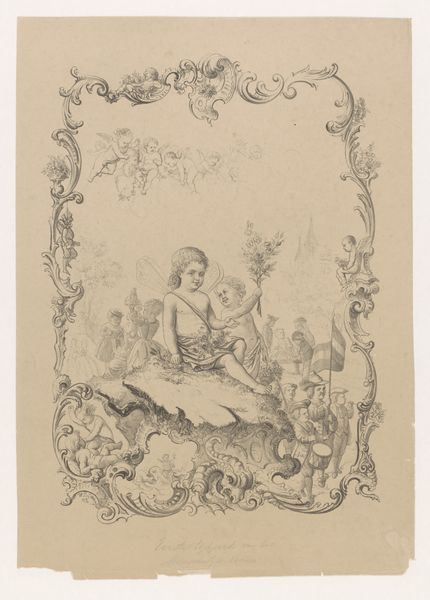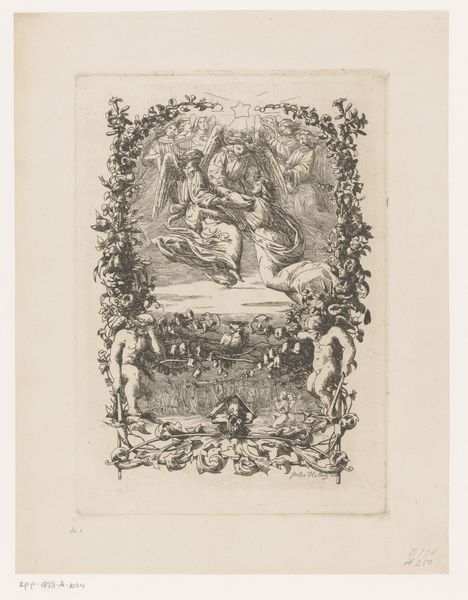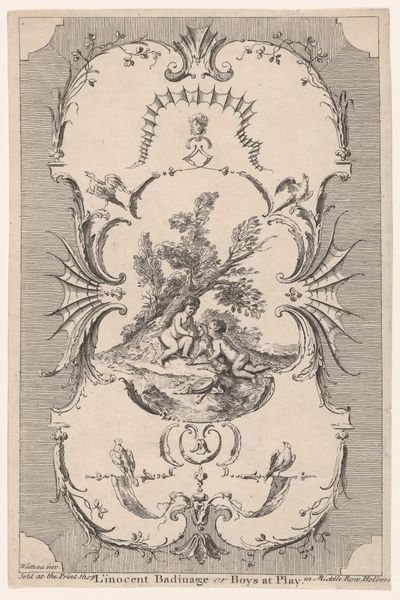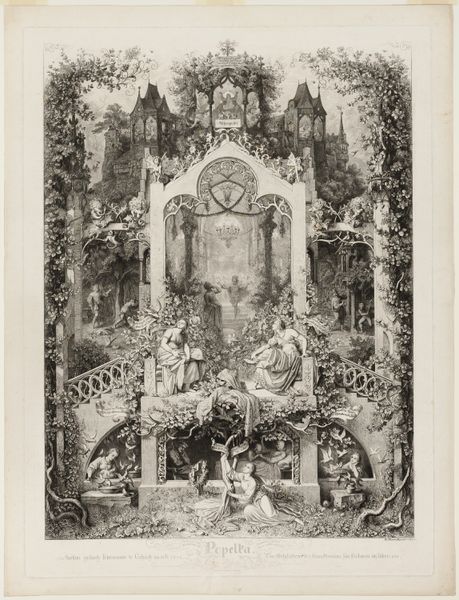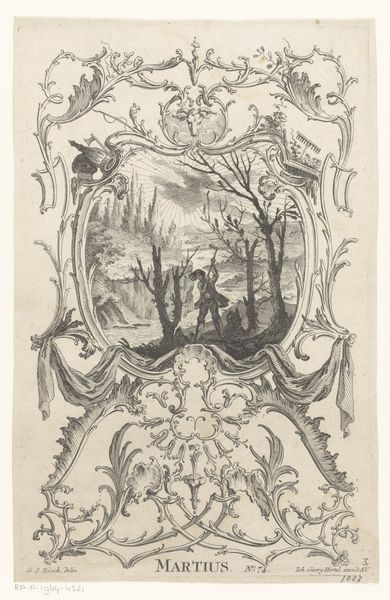
Ontwerp voor een lambrisering met een vrouw op een schommel 1705 - 1772
0:00
0:00
print, engraving
# print
#
old engraving style
#
landscape
#
figuration
#
personal sketchbook
#
line
#
genre-painting
#
engraving
#
rococo
Dimensions: height 588 mm, width 397 mm
Copyright: Rijks Museum: Open Domain
Curator: This engraving, entitled "Ontwerp voor een lambrisering met een vrouw op een schommel," which translates to "Design for a paneling with a woman on a swing," was created between 1705 and 1772. It's currently held in the collection of the Rijksmuseum. Editor: It's delightfully frivolous! The eye is immediately drawn to the woman on the swing, caught in a moment of mid-air flirtation. The delicate linework really captures the airy, carefree spirit. Curator: Absolutely. Looking at it through a materialist lens, we see this isn’t simply an image, but a designed object intended for mass reproduction. As a print, it represents a desire to decorate the homes of the rising merchant class and participate in that culture of display. Editor: True, but let's not overlook how masterfully Huquier uses line and form to create depth and movement within the frame. Observe the cascading foliage; the eye is subtly directed towards the figures. The swirling border mimics the swinging motion. Curator: I see what you mean, but it's essential to also think about the labor involved in the production of prints, from the initial design by Huquier to the work of the artisans reproducing his designs for wide distribution. Were these workers part of workshops with connections to the art market, or where they part of independent contractors laboring within a domestic context? Editor: These questions bring context but the image speaks for itself, reflecting Rococo sensibilities. There's a clear celebration of elegance and pleasure within the composition. It embodies the stylistic conventions of the era. The romantic scene framed with ornate embellishments! Curator: Precisely! By examining such an image, we reveal much about eighteenth-century French social values, the culture of consumerism, and the complex web of social relationships that fueled the production and consumption of luxury goods. It allows to think not only about design as form but how that form comes to be a signifier through the modes of its production and dissemination. Editor: A wonderful, very productive observation, and a way to round out this consideration of the panel print from Rijksmuseum! Curator: Thank you. It provides a lens through which to view its materiality and cultural legacy.
Comments
No comments
Be the first to comment and join the conversation on the ultimate creative platform.
